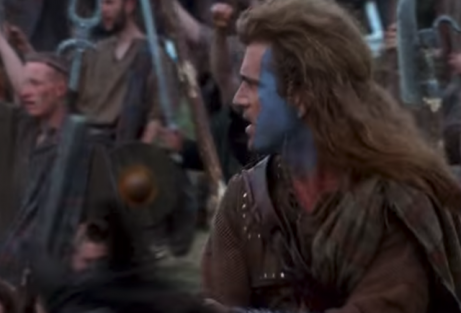
As such, they were required to play both English and Scottish warriors.


Overall, the film required around 1,500 extras, who were reused and repackaged accordingly to cut costs. To make up the armies, members of the Irish Army Reserve and local horsemen were brought in. Some historians estimate that the odds were stacked against the rebellious troops at five soldiers to one, and this is reflected in the scene. This battle scene also highlights how outnumbered the Scots forces were compared to the English. This is the first time we see the Scots engage in a proper battle, with the end result proving that kilt-sporting infantrymen could outsmart and beat English cavalrymen. In the movie, however, it’s a key scene that does boast some similarities with reality. This meant that they didn’t have a bridge at their disposal, which is why the scene takes place on grassland instead. As a result of shooting most of the film in Ireland, the battle was shot in the Curragh Plain region, a 5,000 acre stretch of land between the towns of Newbridge and Kildare. It’s one of several scenes in the film that takes liberties with history for the purposes of entertainment. In Braveheart, the re-creation of the battle isn’t entirely authentic. It was a victorious day for the Scots in their quest to gain independence from King Edward I’s rule.

On September 11, 1297, ragtag Scottish forces led by Andrew Moray and William Wallace defeated English soldiers spearheaded by John de Warenne, 6th Earl of Surrey, and Hugh de Cressingham near Stirling. The Battle of Stirling Bridge took place during the First War of Scottish Independence. In this entry, we explore the creation of one of Braveheart’s epic battle scenes.

This article is part of our One Perfect Archive project, a series of deep dives that explore the filmmaking craft behind some of our favorite shots.


 0 kommentar(er)
0 kommentar(er)
